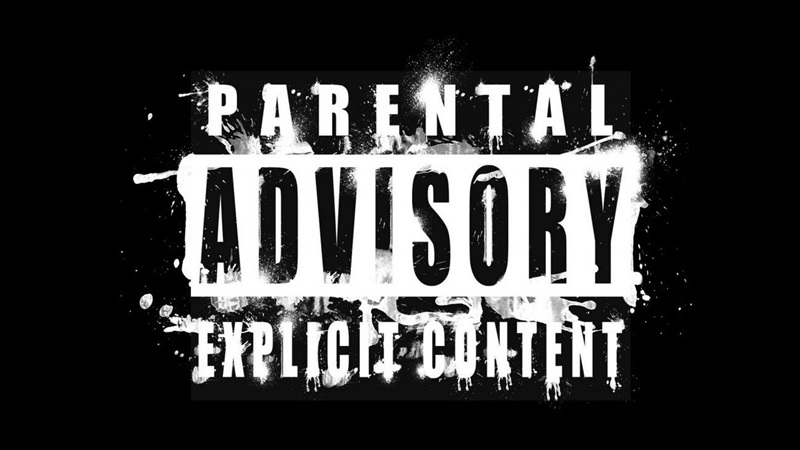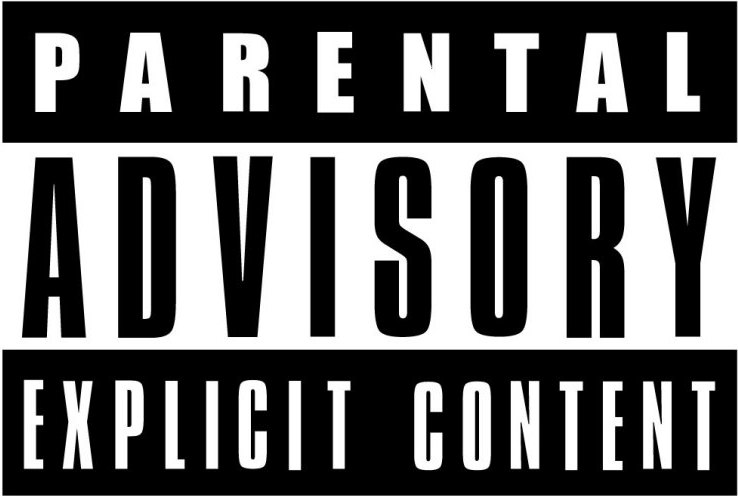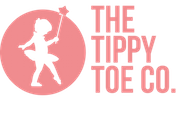Parental advisory labels, commonly seen on music albums and other forms of media, have a long and complex history. These labels were first introduced in 1985 by the Recording Industry Association of America (RIAA) in response to concerns about explicit content in music. The criteria for receiving a parental advisory label include the use of profanity, references to drugs or alcohol, sexual content, or violent themes.
The decision to apply these labels is made by a committee of industry professionals who review the content of the material in question. While some argue that these labels help parents make informed decisions about what their children consume, others believe that they can be overly restrictive and limit artistic expression. Despite the controversy surrounding parental advisory labels, they continue to be a common sight in the music industry and serve as a reminder of the ongoing debate over censorship and freedom of expression.

Understanding ‘Parental Advisory’ Labels: What They Really Mean
Parental Advisory labels are often misunderstood by many people. These labels are not meant to restrict or censor artistic expression, but rather to inform consumers about the content of the material they are purchasing. The purpose of these labels is to help parents make informed decisions about what media is appropriate for their children to consume. The Parental Advisory label indicates that the content of the material may not be suitable for all audiences, particularly young children.
It serves as a warning for parents to consider whether the material is appropriate for their child’s age and maturity level. While some may argue that these labels limit freedom of expression, they are actually meant to empower parents to make decisions that align with their values and beliefs. It is important for consumers to understand that these labels are not meant to dictate what is right or wrong, but rather to provide information that allows individuals to make choices that are in line with their own personal standards and beliefs. Ultimately, the goal of Parental Advisory labels is to promote awareness and encourage responsible decision-making when it comes to media consumption.
How Are ‘Parental Advisory’ Labels Decided? An Inside Look at the Criteria
Parental advisory labels are determined by a committee of industry professionals who review the content of music, movies, and other forms of media to determine if they contain explicit content that may not be suitable for children. The criteria for deciding whether a parental advisory label is necessary include themes of violence, drug use, sexual content, and strong language.
The committee takes into consideration the overall tone of the material and the impact it may have on young audiences. They also consider the context in which these themes are presented and whether they are gratuitous or essential to the story being told. The decision to apply a parental advisory label is made based on a consensus among the committee members, who weigh the potential risks and benefits of allowing children access to the content in question. Ultimately, the goal of the parental advisory system is to provide parents with the information they need to make informed decisions about what their children are exposed to in the media.
By applying these labels, the industry aims to empower parents to take an active role in monitoring and regulating their children’s consumption of potentially sensitive material. This system allows for a level of self-regulation within the industry, ensuring that creators are able to express themselves freely while still being mindful of the potential impact on young audiences.

A Brief History of ‘Parental Advisory’ Labels: From Inception to Today
Parental Advisory labels were first introduced in 1985 by the Recording Industry Association of America (RIAA) in response to concerns over explicit content in music. The idea behind the labels was to inform parents about potentially offensive material so they could make informed decisions about what their children were listening to. The first album to receive a Parental Advisory label was «Prince’s Purple Rain,» which featured explicit lyrics and themes. Over the years, the criteria for receiving a Parental Advisory label has evolved to include not just explicit lyrics, but also graphic language, violence, and drug references.
The introduction of Parental Advisory labels sparked controversy and debate within the music industry and among the general public. Some artists and music fans saw the labels as a form of censorship and an infringement on artistic freedom. However, many parents and child advocacy groups supported the labels as a way to protect children from potentially harmful content. Despite the controversy, Parental Advisory labels became a common sight on album covers in the late 1980s and 1990s, with many retailers refusing to sell albums with explicit content to minors.
In recent years, the rise of digital music and streaming services has changed the way music is consumed, leading some to question the relevance of Parental Advisory labels in the digital age. With the ability to easily access music online, some argue that parents have more control over what their children listen to and may not need the labels as much. However, others argue that the labels still serve an important purpose in providing information to parents about the content of music.
Overall, Parental Advisory labels have been a controversial but important part of the music industry for over 30 years. While opinions on their effectiveness and necessity may vary, one thing is clear: they have had a lasting impact on the way music is marketed and consumed.

The Impact of ‘Parental Advisory’ Labels on Music and Media
Parental Advisory labels have been a controversial topic since they were first introduced in the 1980s. These labels are meant to warn parents of potentially explicit or offensive content in music and other media, allowing them to make informed decisions about what their children are exposed to. While some argue that these labels are necessary to protect young audiences from harmful material, others believe that they are unnecessary and infringe on artists’ freedom of expression.
The impact of parental advisory labels on music and media has been significant, with many artists altering their content to avoid receiving the label. This has led to debates about censorship and artistic integrity, as artists struggle to balance their creative vision with the need to reach a wider audience. Additionally, some argue that these labels can actually increase the appeal of certain content to rebellious teenagers, leading to unintended consequences.
Despite these criticisms, parental advisory labels continue to be a common practice in the entertainment industry, with many parents relying on them to make informed decisions about what their children consume. Ultimately, the impact of these labels is complex and multifaceted, with both positive and negative implications for artists, audiences, and the industry as a whole.
Behind the Scenes: Who Determines When a Label is Required?
Behind the scenes of determining when a label is required is a complex process that involves various stakeholders. This includes government agencies, industry experts, and consumer advocates who all play a role in ensuring that products are accurately labeled for the benefit of consumers. These stakeholders work together to establish guidelines and standards that help determine when a label is necessary based on factors such as the ingredients, potential health risks, and marketing claims associated with a product.
Additionally, industry groups and trade associations may also have a say in determining when a label is required, as they strive to uphold industry best practices and maintain consumer trust. Ultimately, the decision of when a label is required is a collaborative effort that involves input from multiple parties to ensure that consumers are informed and empowered to make educated choices about the products they purchase. This process highlights the importance of transparency and accuracy in labeling to protect consumer rights and promote a fair marketplace for all stakeholders involved.
